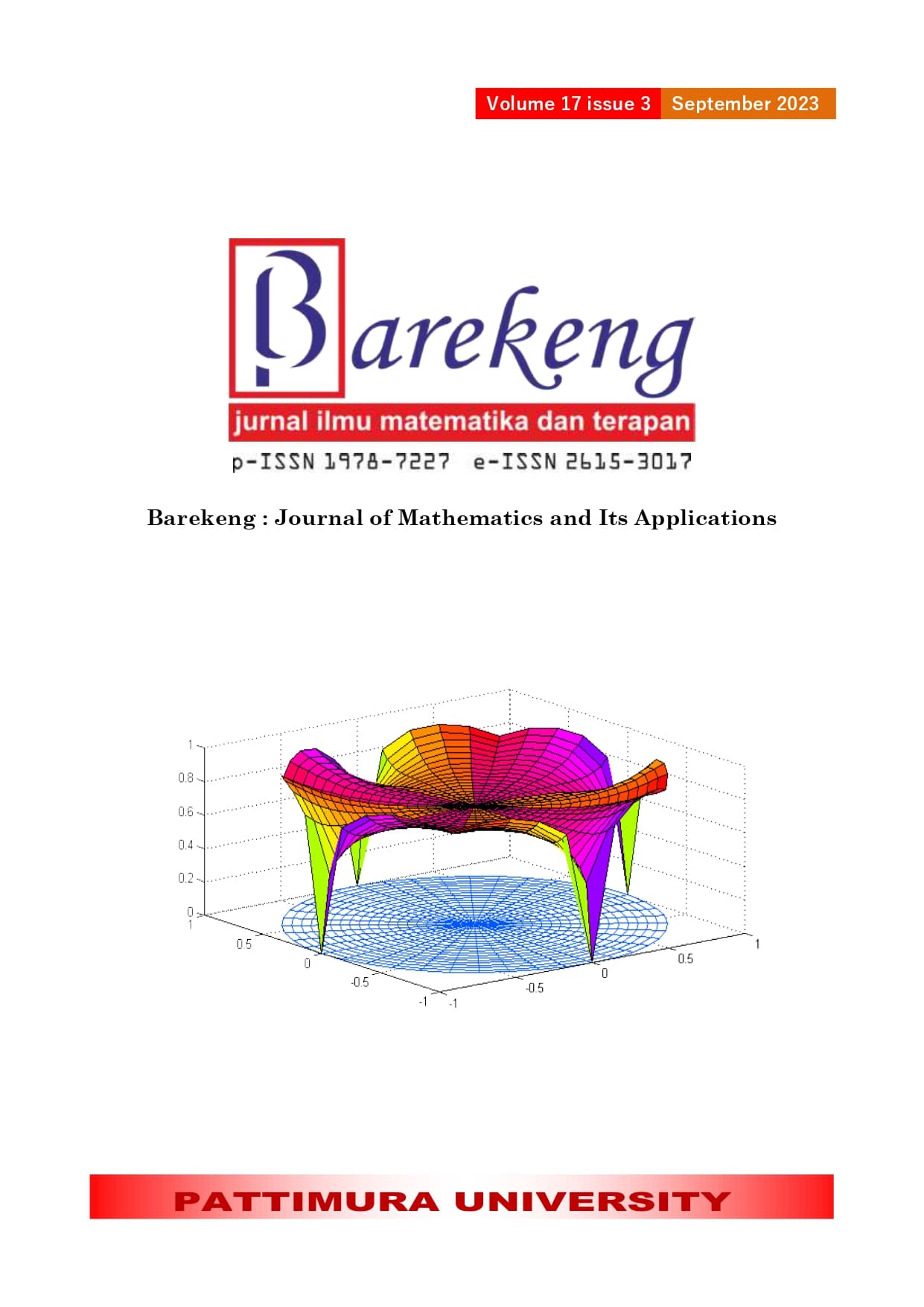CLASSIFICATION OF STUDENT GRADUATION STATUS USING XGBOOST ALGORITHM
Abstract
College is an optional final stage in formal education. At this time, universities are required to have good quality by utilizing all the resources they have. Therefore, efforts are needed to help the faculty and study program make policies and decisions. One of the efforts that can be made is to classify student graduation status as early as possible to increase the number of students graduating on time. Thus, a classification algorithm is needed to avoid overfitting and produce good accuracy. The purpose of this study was to classified the student graduation status of the Statistics Untan Study Program using the XGBoost algorithm. XGBoost is an ensemble algorithm obtained through the development of gradient boosting. XGBoost has several features that can be used to prevent overfitting, but it can only process numerical data. Therefore, 140 numerical data were adjusted using the dummy technique in this study. The resulting XGBoost classification model is optimal at the number of rounds is 3 and the number of folds is 5. Based on the performance evaluation of the XGBoost algorithm, an accuracy of 75,00%, precision of 88,89%, sensitivity of 76,19% and specificity of 71,43% were obtained. Thus, the performance of the XGBoost algorithm is classified as good.
Downloads
References
N. Hasanah, F. Syahfitri and T. Pujahadi, “Sosialisasi Tentang Pentingnya Pendidikan Tingkat Perguruan Tinggi Kepada Masyarakat Desa Jaring Halus,” Jurnal Pengabdian Kepada Masyarakat, pp. 23-29, 2021.
MA BAN-PT, “Kebijakan Instumen Akreditasi BAN-PT dan LAM Berbasis SN Dikti,” BAN-PT, 2019.
E. Haryatmi and S. P. Hervianti, “Penerapan Algoritma Support Vector Machine untuk Model Prediksi Kelulusan Mahasiswa Tepat Waktu,” Jurnal RESTI (Rekayasa SIstem dan Teknologi Informasi, vol. 5, no. 2, pp. 386-392, 2021.
Y. Mardi, “Klasifikasi Menggunakan Algoritma C4.5,” Jurnal Edik Informatika Penelitian Bidang Komputer Sains dan Pendidikan Informatika, vol. 2, no. 2, pp. 213-219, 2017.
S. E. H. Yulianti, O. Soesanto and Y. Sukmawaty, “Penerapan Metode Extreme Gradient Boosting (XGBoost) pada Klasifikasi Nasabah Kartu Kredit,” Journal of Mathematics: Theory and Applications, pp. 21-26, 2022.
A. A. Firdaus and A. K. Mutaqin, “Klasifikasi Pemegang Polis Menggunakan Metode XGBoost,” Prosiding Statistika, pp. 704-710, 2021.
M. R. Givari, M. R. Sulaeman and U. Y, “Perbandingan Algoritma SVM, Random Forest dan XGBoost untuk Penentuan Persetujuan Pengajuan Kredit,” Nuansa Informatika, vol. 16, no. 1, pp. 141-149, 2022.
M. K. Nasution, R. R. Saedudin and V. P. Widartha, “Perbandingan Akurasi Algoritma Naive Bayes dan Algoritma XGBoost pada Klasifikasi Penyakit Diabetes,” eProceedings of Engineering, vol. 8, no. 5, 2021.
T. H. Hasibuan and D. Mahdiana, “Prediksi Kelulusan Mahasiswa Tepat Waktu Menggunakan Algoritma C4.5 pada UIN Syarif Hidayattullah Jakarta,” SKANIKA: Sistem Komputer dan Teknik Informatika, vol. 6, no. 1, pp. 61-74, 2023.
A. A. Hania, “Mengenal Artificial Intelligence, Machine Learning, Neural Network, dan Deep Learning,” Jurnal Teknologi Indonesia, vol. 1, pp. 1-6, 2017.
J. Han, M. Kamber and J. Pei, Data Mining Concepts and Techniques Third Edition, University of Illinois at Urbana-Champaign Micheline Kamber Jian Pei Simon Fraser University, 2012.
X. Li and Z. Li, “A Hybrid Prediction Model for E-Commerce Customer Churn Based on Logistic Regression and Extreme Gradient Boosting Algorithm,” Ingenierie des Systemes d'Information, vol. 24, no. 5, pp. 525-530, 2019.
D. Zhang and Y. Gong, “The Comparison of LightGBM and XGBoost Coupling Factor Analysis and Prediagnosis of Acute Liver Failure,” IEEE Access, vol. 8, pp. 220990-221003, 2020.
T. Chen and C. Guestrin, “Xgboost: A Scalable Tree Boosting System,” Proceedings of the 22nd acm sigkdd international conference on knowledge discovery and data mining, pp. 785-794, 2016.
S. F. N. Islam, A. Sholahuddin and A. S. Abdullah, “Extreme Gradient Boosting (XGBoost) Method in Making Forecasting Application and Analysis of USD Exchange Rates Against Rupiah,” Journal of Physics: Conference Series, vol. 1722, no. 1, p. 012016, 2021.
F. Y. Manik and K. S. Saragih, “Klasifikasi Belimbing Menggunakan Naive Bayes Berdasarkan Fitur Warna RGB,” IJCCS: Indonesian Journal of Computing and Cybernetics Systems, vol. 11, no. 1, pp. 99-108, 2017.
Copyright (c) 2023 Maria Welita Dwinanda, Neva Satyahadewi, Wirda Andani

This work is licensed under a Creative Commons Attribution-ShareAlike 4.0 International License.
Authors who publish with this Journal agree to the following terms:
- Author retain copyright and grant the journal right of first publication with the work simultaneously licensed under a creative commons attribution license that allow others to share the work within an acknowledgement of the work’s authorship and initial publication of this journal.
- Authors are able to enter into separate, additional contractual arrangement for the non-exclusive distribution of the journal’s published version of the work (e.g. acknowledgement of its initial publication in this journal).
- Authors are permitted and encouraged to post their work online (e.g. in institutional repositories or on their websites) prior to and during the submission process, as it can lead to productive exchanges, as well as earlier and greater citation of published works.






1.gif)



